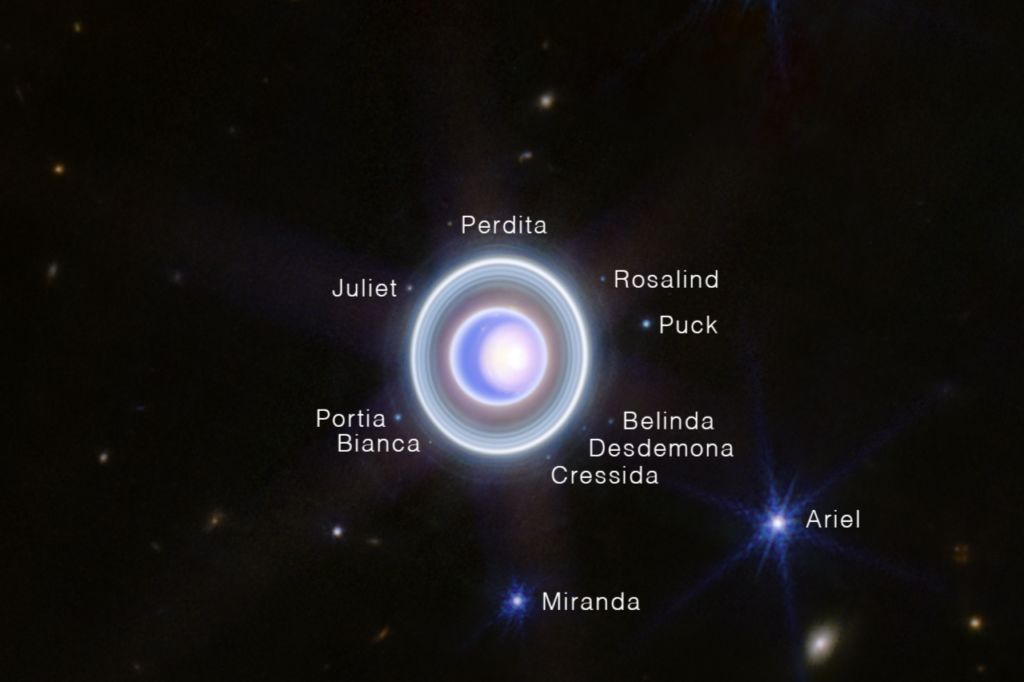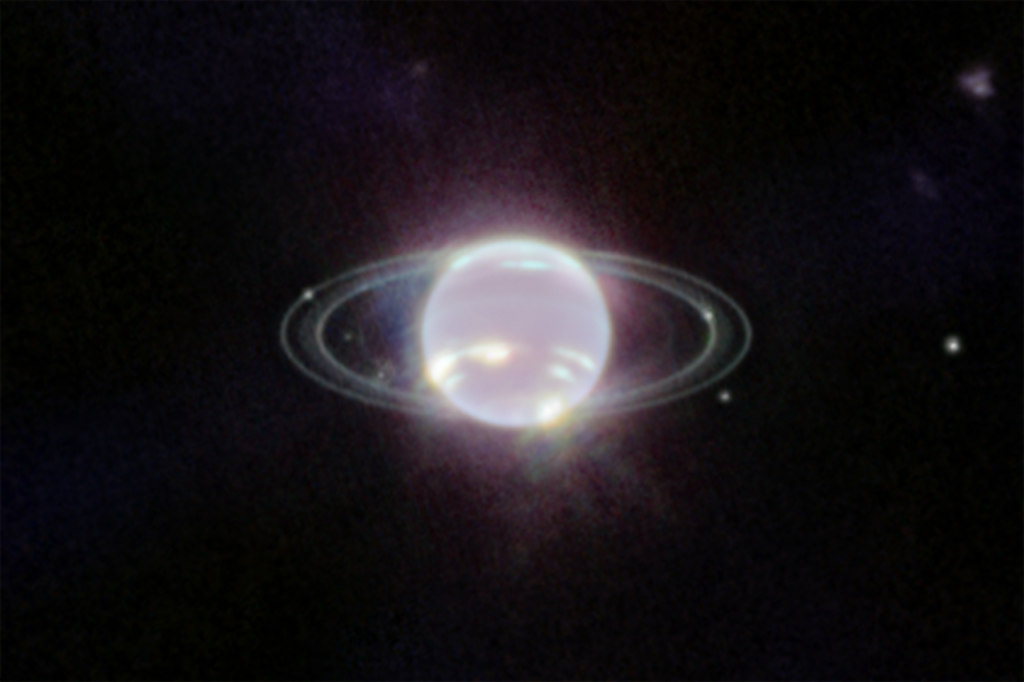The following is a comparison between Uranus and Neptune, the last two planets in the solar system. Let’s read.
Uranus vs Neptune – planet comparison
Which planet is bigger, Uranus or Neptune?
Uranus has a bigger diameter as compared with Neptune. Uranus is thus the third biggest planet in our solar system after Jupiter and Saturn.
- Radius of Uranus – 25,362 km (15,759.2 miles)
- Radius of Neptune – 24,622 km (15,299.4 miles)
Which planet has more moons, Uranus or Neptune?
There are 28 known moons of Uranus. Uranus has the third highest number of moons after Saturn and Jupiter. Neptune has 16 known moons. The number of moons of the gas giants may increase as modern telescopes discover new moons.
Which planet has more mass?
Although Uranus is bigger in diameter, Neptune is more massive.
- Mass of Uranus – 8.681 × 10^25 kg
- Mass of Neptune – 10.24 × 10^25 kg
ADVERTISEMENT
Does Uranus have rings?

Yes, Uranus also has rings around it. Moreover, all the four gas giants have rings.
Does Neptune have rings?

Yes, Neptune has at least 5 main rings. The rings of Neptune are very faint and made of small rocks and dust.
Which planet is more dense?
Both Uranus and Neptune have very low densities. Among the four gas giants, Neptune is the densest.
- Density of Uranus – 1.27 g/cm³
- Density of Neptune – 1.64 g/cm³
Comparison table
| Uranus | Neptune | |
|---|---|---|
| Radius | 25,362 km (15,759.2 miles) | 24,622 km (15,299.4 miles) |
| Size rank | 3rd | 4th |
| Mass rank | 4th | 3rd |
| Position from the Sun | 7th | 8th |
| Number of moons | 28 | 16 |
| Day length | around 17 hours | around 16 hours |
| Year length | around 84 Earth years | around 165 Earth years |
| Composition | mostly water, ammonia, and methane (Atmosphere is mostly hydrogen, helium, and methane) | mostly water, ammonia, and methane (Atmosphere is mostly hydrogen, helium, and methane) |
| Distance from the Sun | 2.9 billion km (1.8 billion miles) | 4.5 billion km (2.8 billion miles) |
| Mass comparison to Earth | equal to 14.5 Earths | equal to 17.1 Earths |
| Volume comparison to Earth | equal to 63 Earths | equal to 57 Earths |
| Planet type | Ice giant | Ice giant |
| Ring system | Yes | Yes |
| Named after | the Greek god of the sky | the Roman god of the sea |
| Surface | doesn’t have a true solid surface | doesn’t have a true solid surface |
| Time taken by sunlight to reach | around 2 hours 40 minutes | around 4.1 hours |
Read more